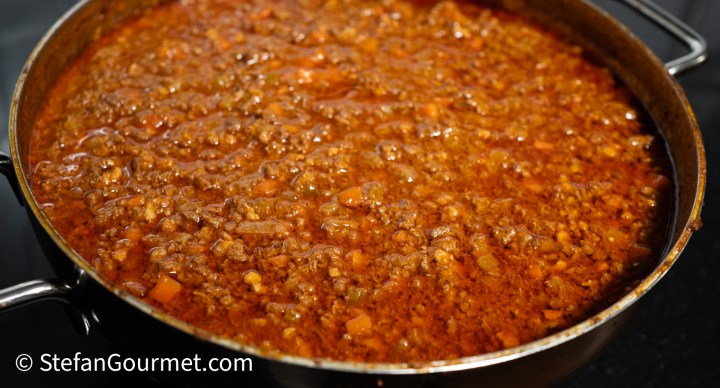
Italians are very proud of their culinary heritage, and rightly so. There are even some traditional Italian dishes for which an official recipe has been established. This helps to preserve the traditional dishes in their original form. The most famous of those is Ragù alla Bolognese, the famous pasta sauce from the city of Bologna. I have written an extensive commentary of the new (2023) versus the old (1982) official recipe here. I’ve written this blog for everyone who just wants the recipe without all of the additional information. The official recipe leaves some room for variations and below is the way I prepare Bolognese now.
Ingredients
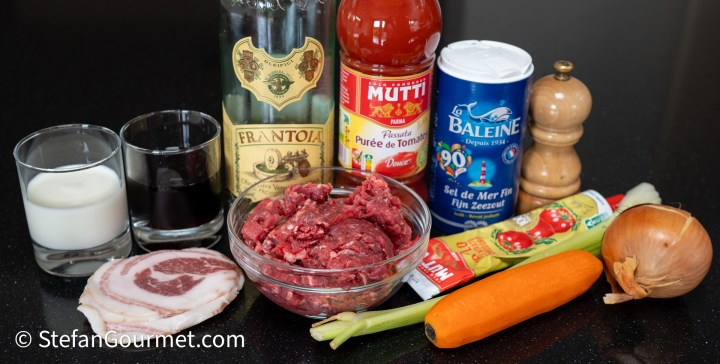
The amount is for 4 servings or 400 grams of dry pasta or fresh tagliatelle made with 4 eggs. You can easily double, triple, or quadruple the recipe and freeze what is left.
- 400 grams of coarsely ground beef (chuck, plate, skirt, brisket, blade steak)
- 150 grams of pancetta (unsmoked!), finely minced
- 60 grams carrot, 60 grams celery, 60 grams onion, finely diced
- 100 ml white or red wine
- 200 grams of passata di pomodoro (sieved tomatoes)
- 1 Tbsp double-concentrated tomato paste
- 100 ml whole milk
- 3 Tbsp extra virgin olive oil
- salt and freshly ground black pepper, to taste
- water or stock, as needed
Preparation
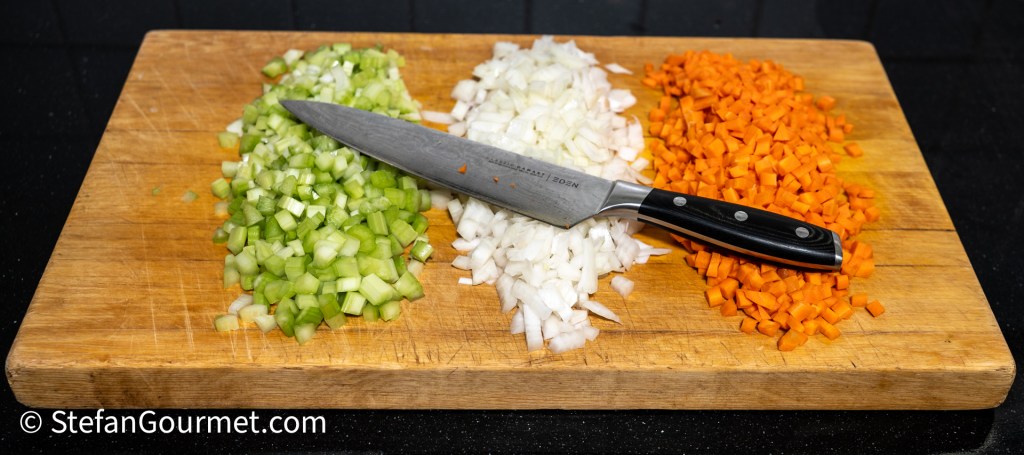
Finely dice 60 grams of celery, 60 grams of onion, and 60 grams of carrot by hand with a knife and a cutting board.

Finely mince 150 grams of pancetta. Heat 1 tablespoon olive oil in a casserole and add the pancetta. Allow the fat to render from the pancetta over medium heat.
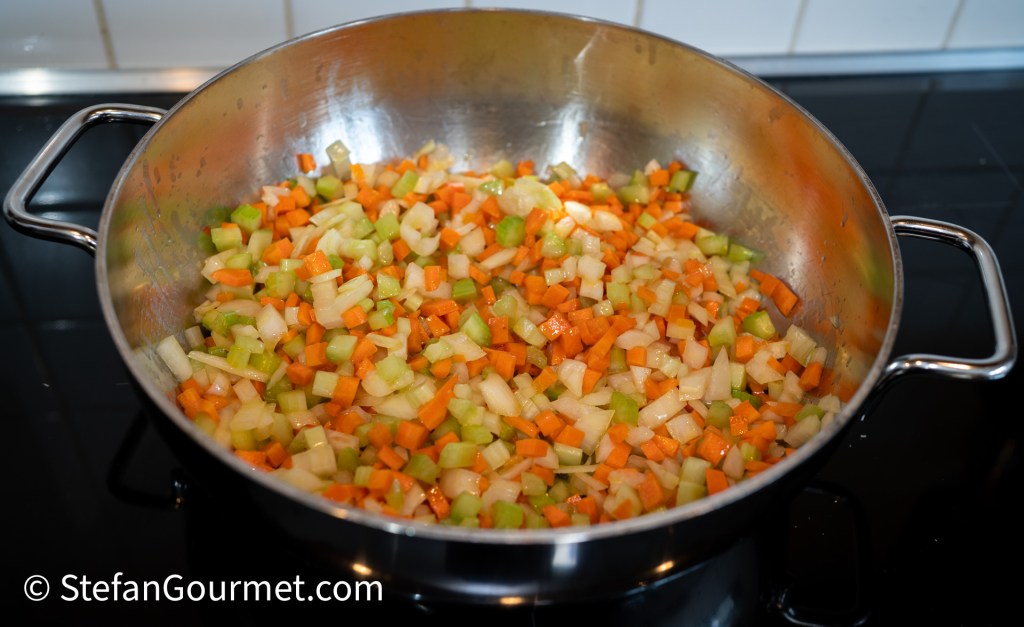
Add the celery, onion, and carrot. Sauté gently over medium-low heat, stirring continuously with a large wooden spoon.

The vegetables are done when they are slightly golden. The onion should absolutely not get a burnt taste. Turn off the heat.
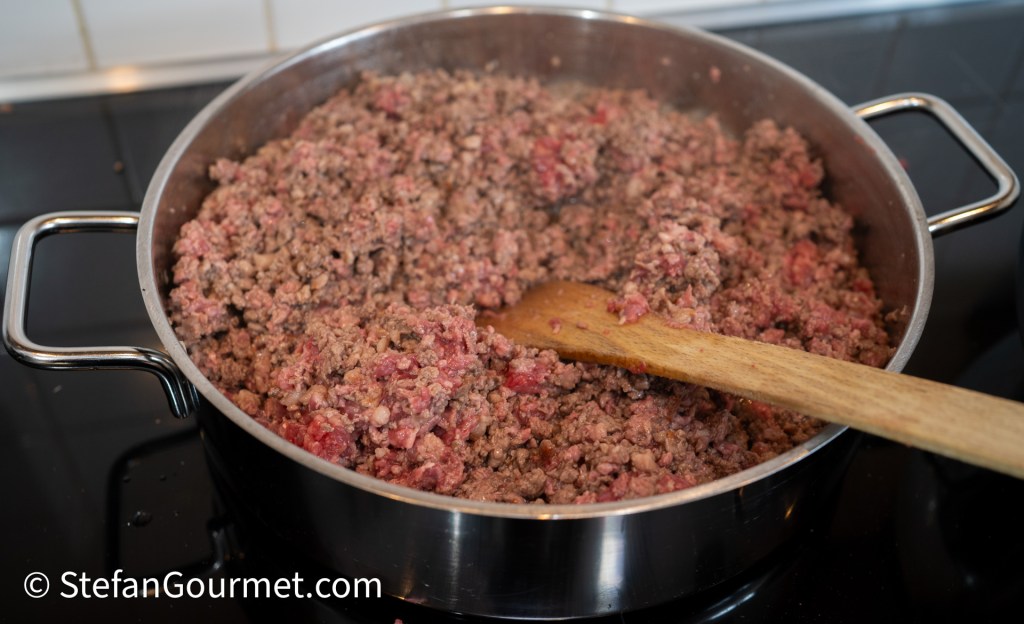
In a separate wide frying pan, heat the remaining 2 tablespoons of olive oil over high heat. Add 400 grams of coarsely ground beef and stir over high heat with a wooden spatula…

…until the meat sizzles, about 10 minutes. (The sizzling means that most of the water has evaporated. The liquid you can still see is the fat that has been rendered from the meat and the olive oil.)
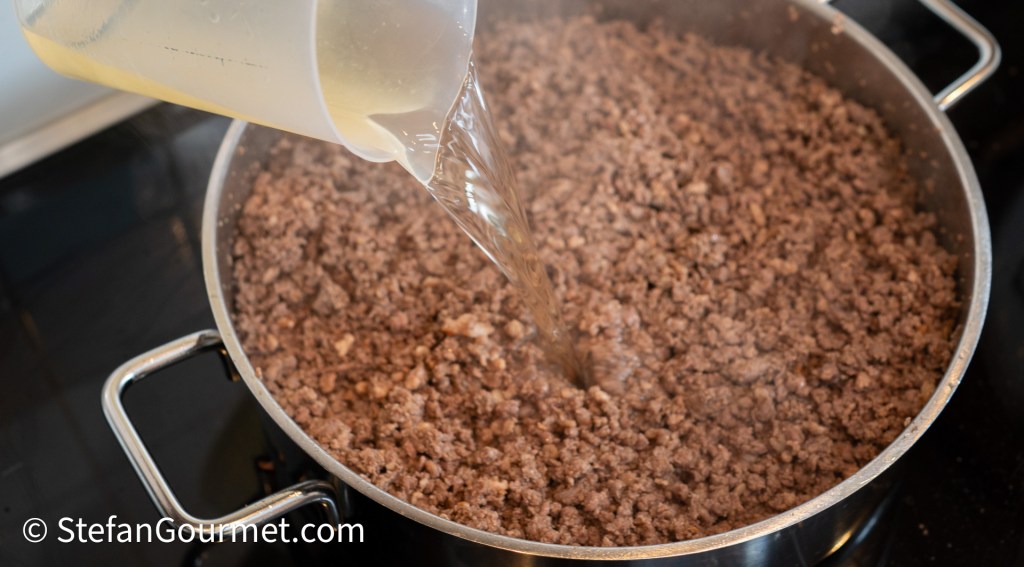
Deglaze the beef with 50 ml of wine, stirring with a wooden spatula to release any flavor stuck to the bottom of the pan, then turn off the heat.
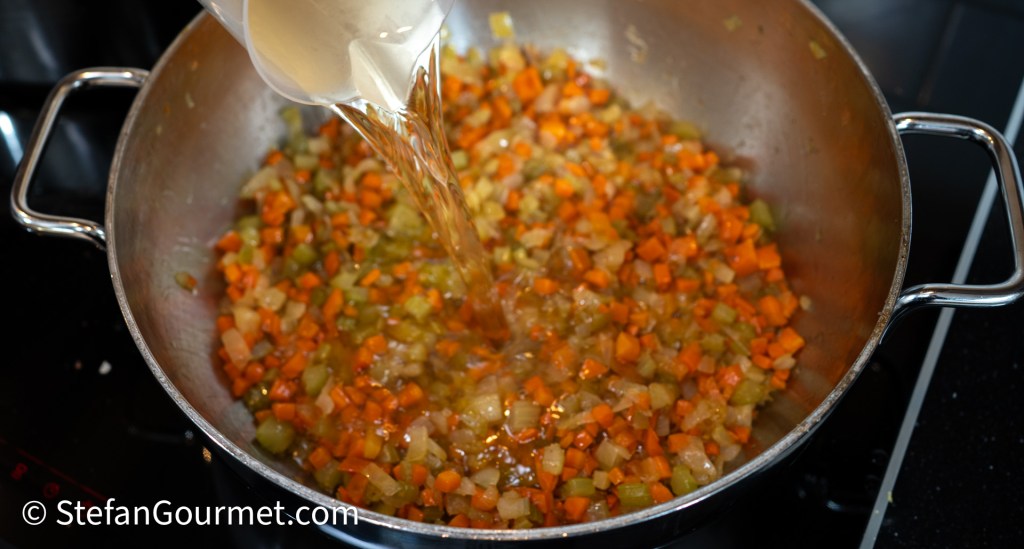
Deglaze the casserole with the aromatics with the remaining 50 ml of wine. Allow it to evaporate and reduce completely, until you can’t smell the wine anymore.
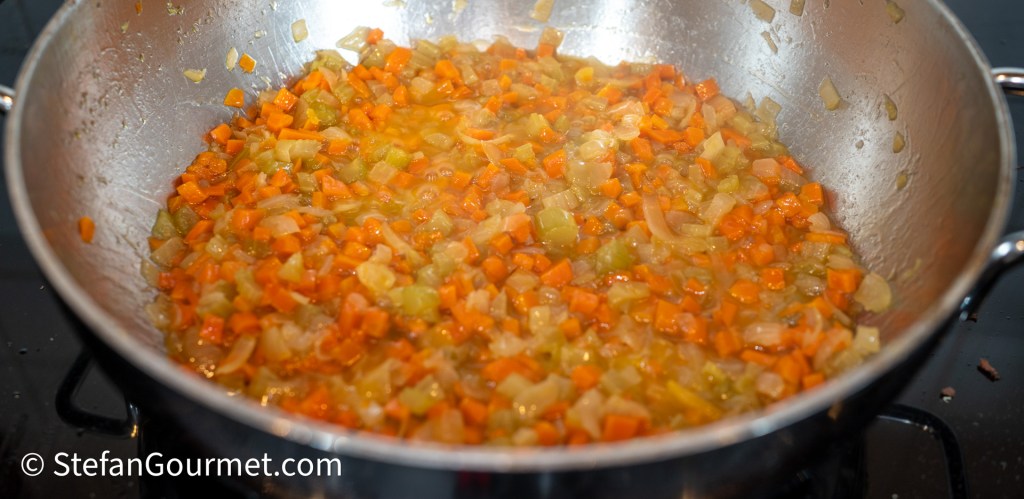
When the wine in the casserole with the aromatics have reduced sufficiently…
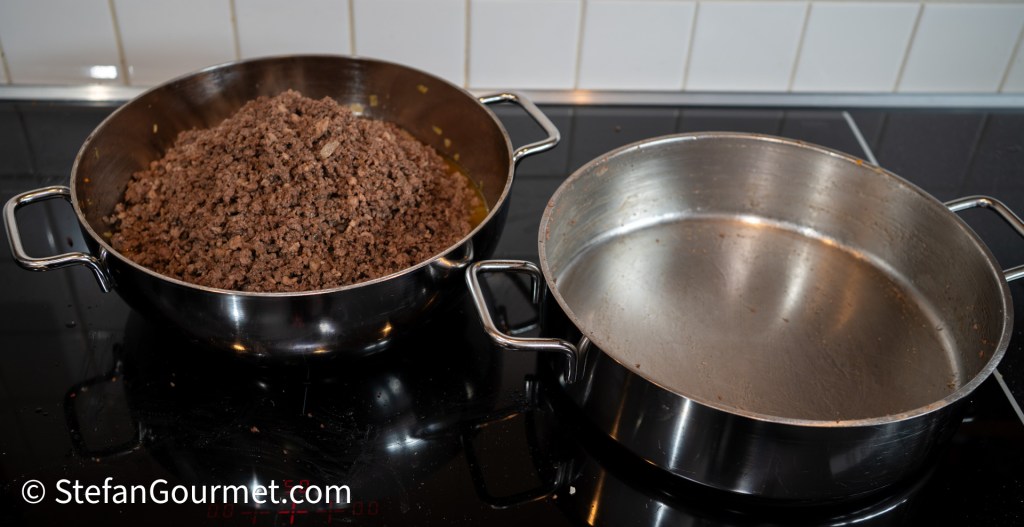
…add the meat to the casserole. (As you can see there is nothing left behind in the pan in which I sautéed the meat, because I scraped along the bottom with a wooden spatula after deglazing with the wine. This is important to get all of the flavor into your ragù.)
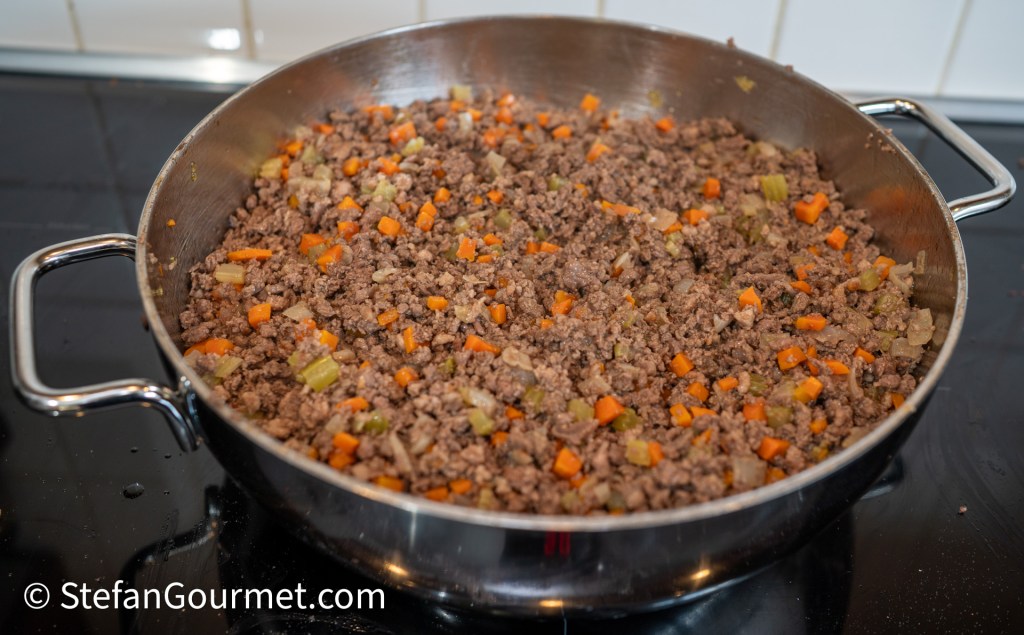
Mix everything together.
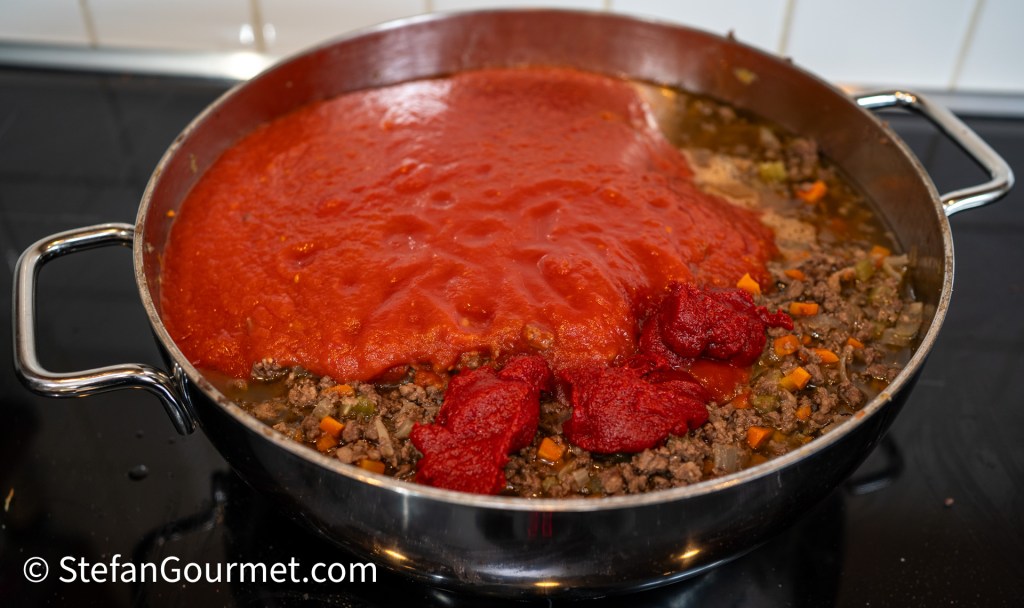
Add 200 grams passata di pomodoro and 1 tablespoon of double-concentrated tomato paste.
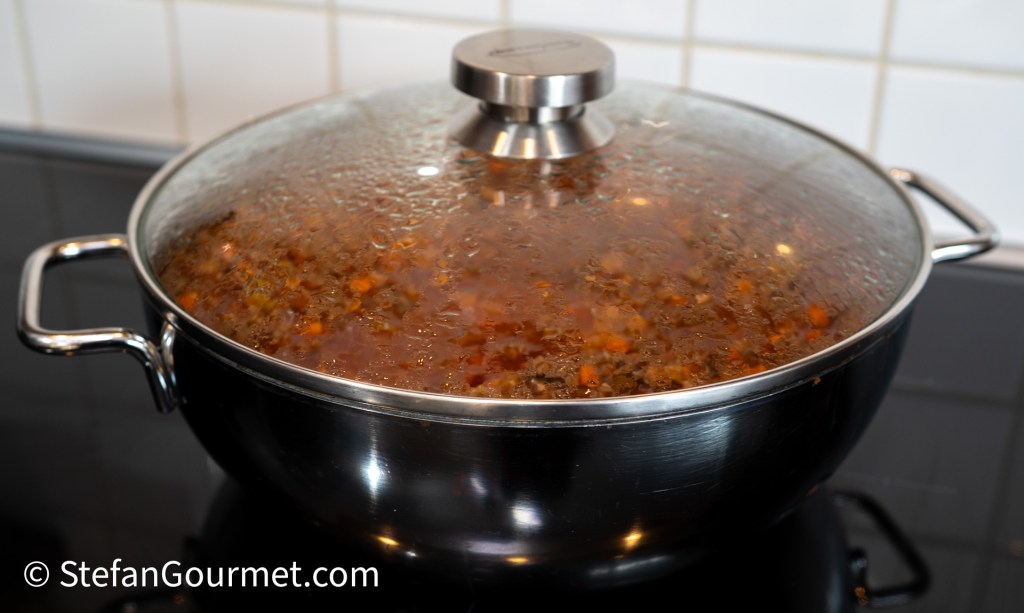
Cover, bring to a boil, lower the heat, and simmer the ragù over low heat for 2 hours.
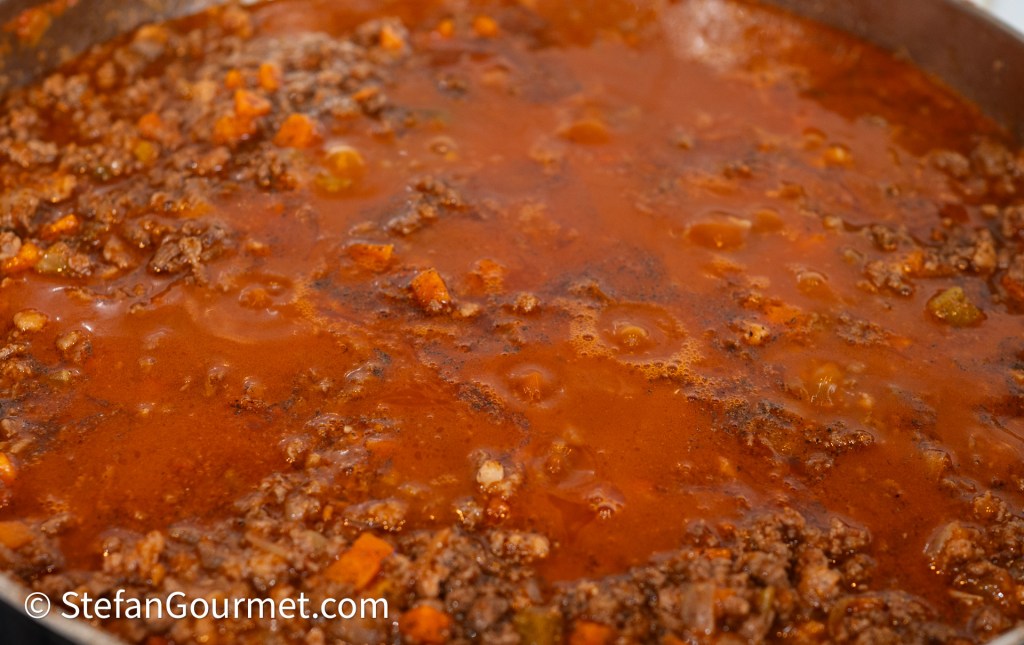
Regulate the heat so that you get just a few bubbles escaping from the surface.

It is important to stir now and then, to prevent the ragù from sticking to the bottom. (The official recipe says to add water or stock as needed, but if you cover the pot and regulate the heat properly, that should not be necessary.)
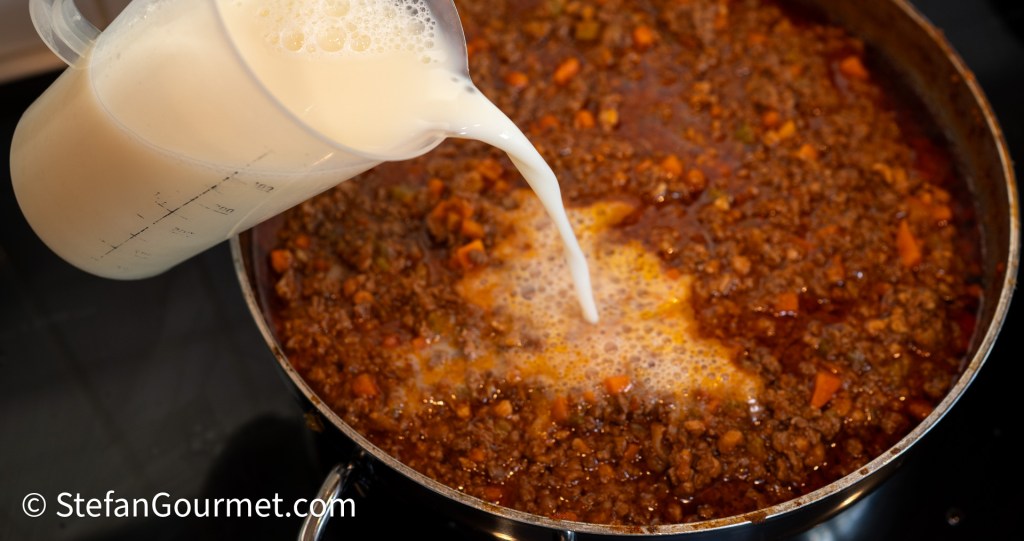
After 2 hours, add 100 ml of whole milk.
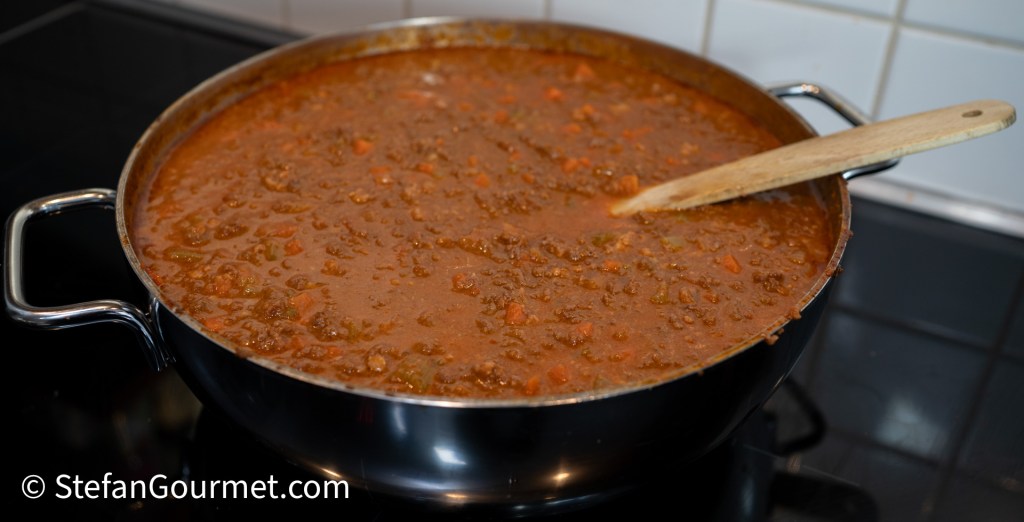
Stir until the milk has been mixed in well.

Simmer for another hour.

Taste and adjust the seasoning with salt and freshly ground black pepper.

To serve, boil tagliatelle and drain them when they are still al dente. Add the cooked tagliatelle to the ragù and stir to mix. Serve on preheated plates, garnished with freshly grated parmigiano reggiano.


*huge late night smile* I see there have been seven ‘pingbacks’ to your marvellous recipe already- mine seems to be the first amongst ‘thoughts’! But I can thoroughly understand your recipe will be amongst those safely kept by many for a long, long time. As it will be by me – thank you from the land of spag bol and chicken parmi > some of us DO prefer the ‘real thing’ 🙂 !
LikeLiked by 1 person
Very tasty!
LikeLiked by 1 person
Lovely. Bolognese is a favorite in our house. What makes it so lovely is a few quality ingredients and TIME make for a beautiful dish. Thanks for sharing.
LikeLiked by 1 person
Perfetto!!
LikeLiked by 1 person
I see in the recipe Accademia Italiana Della Cucina, it has a light meat/ veg broth as well?
LikeLike
The water or stock is an optional ingredient to use if your ragù gets too dry. You are right that I should have mentioned it, and I have now included it, but I’ve never needed it. The official recipe even allows the use of bouillon cubes. The ones available here are terrible and contain mostly salt and less than 1% of actual beef, but Italian bouillon cubes are much higher quality.
LikeLike